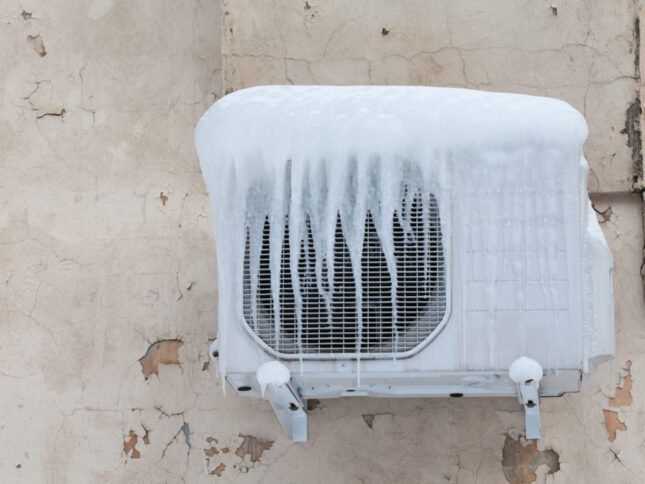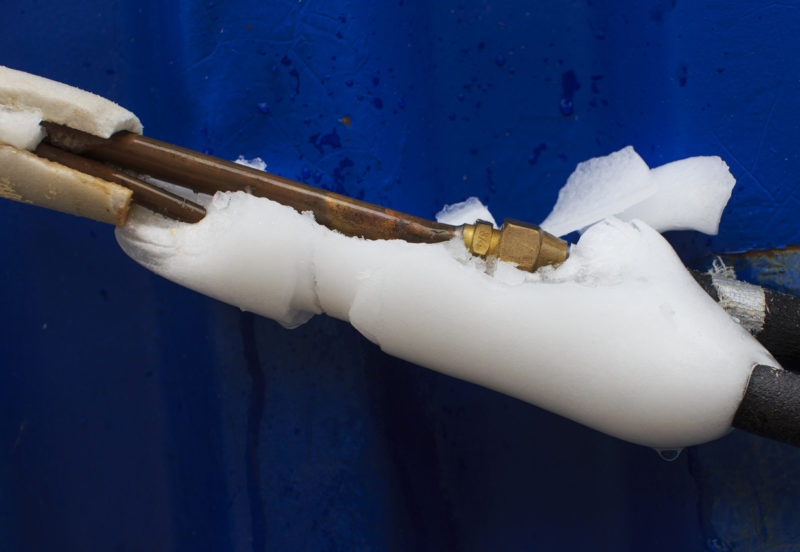How to Handle a Frozen AC Pipe: Professional Guidance
How to Handle a Frozen AC Pipe: Professional Guidance
Blog Article
They are making a number of good pointers on Air Conditioner Frozen? How To Fix your Frozen AC Line in general in this content which follows.

Introduction
Uncovering that your air conditioning pipeline is frozen can be concerning, specifically throughout warm summer season when you rely upon your air conditioning system the most. Understanding what to do in such a circumstance is vital to stop further damage to your cooling system and ensure your comfort indoors.
Understanding the Causes
Several factors can add to the cold of an air conditioner pipeline. Comprehending these causes can help you address the issue effectively.
Absence of Airflow
One common source of a frozen AC pipe is inadequate air movement. When the airflow over the evaporator coil is limited, it can cause the coil to drop below freezing temperature level, resulting in ice development on the pipeline.
Low Refrigerant Levels
Inadequate cooling agent degrees in your AC system can likewise lead to an icy pipeline. Low refrigerant levels can trigger the pressure in the system to go down, bring about the cold of dampness on the evaporator coil.
Winter Conditions
In colder climates, freezing temperatures outside can contribute to the cold of air conditioner pipelines. If your AC system is not correctly shielded or if there are leakages in the ductwork, cool air can penetrate the system, creating the pipe to freeze.
Dirty Air Filters
Unclean or blocked air filters can limit air flow in your air conditioning system, resulting in various concerns, consisting of a frozen pipeline. It's important to replace or cleanse your air filters routinely to make certain appropriate air movement and stop ice build-up.
Indications of a Frozen Air Conditioner Pipe
Acknowledging the indicators of a frozen a/c pipeline is important for punctual action.
Decreased Airflow
If you see a significant reduction in air flow from your vents, it can show an icy pipe.
Ice Buildup on the Pipe
Visible ice buildup on the refrigerant line or the evaporator coil is a clear indicator of a frozen a/c pipe.
Odd Sounds from the Unit
Unusual noises, such as hissing or bubbling, coming from your air conditioning unit can signal that there's ice present on the pipeline.
Immediate Actions to Take
When confronted with an icy air conditioning pipe, it's essential to act quickly to stop additional damage to your cooling system.
Switching off the a/c
The initial step is to shut off your air conditioner to stop the system from running and intensifying the concern.
Looking for Blockages
Evaluate the location around the indoor device for any blockages that may be obstructing air movement, such as furnishings or curtains.
Defrosting the Pipe
You can use mild methods like positioning towels soaked in warm water around the icy pipeline to help thaw it slowly.
Safety nets
Taking safety nets can aid avoid future incidents of a frozen a/c pipeline.
Regular Maintenance Checks
Schedule regular maintenance contact a specialist HVAC technician to ensure that your air conditioning system is running effectively.
Altering Air Filters
Consistently change or clean your air filters to prevent airflow constraints and keep ideal performance.
Insulating Exposed Pipes
If your air conditioner pipelines are subjected to cold temperature levels, think about insulating them to stop freezing throughout winter season.
Seeking Professional Help
If DIY techniques fail to solve the problem or if you're unsure regarding just how to proceed, it's best to look for help from a qualified HVAC technician.
When DIY Methods Fail
If your efforts to thaw the pipeline or address other issues are unsuccessful, it's time to contact a professional.
Importance of Hiring a Professional HVAC Technician
A certified HVAC service technician has the know-how and tools required to identify and fix issues with your AC system securely and efficiently.
Final thought
Managing an icy a/c pipeline can be an aggravating experience, yet knowing just how to react can assist minimize damage and bring back convenience to your home. By recognizing the causes, identifying the indicators, and taking timely action, you can properly attend to the issue and protect against future incidents.
Frozen AC Line: Why It Happens & What To Do About It
A frozen AC line can be a rather peculiar sight in a place like Phoenix, Arizona where nothing ever freezes. In this post, we’ll discuss what makes an air conditioner line frozen – and what you can do about it.
Dirty Air Filters
Did you know that you should be cleaning or replacing your air filters on a monthly basis? Failing to do this can result in airflow issues that, in turn, cause your evaporator coils and lines to freeze over. You’ll notice a buildup of ice on both components, although the buildup on your pipes will, of course, be more evident unless you open your air condition up to reveal the coils.
What To Do About It
Give your air filter a good cleaning if it’s reusable. If not, replace the filter outright. Next, switch your air conditioner’s fan setting on and leave it there for 2-3 hours. This will draw warm air in, helping to thaw your evaporator coil. You can also check out this article for some tips on cleaning the coils themselves if you’d like to speed the process up. Before you switch the unit back to its normal state, make sure the supply vents are completely unobstructed and free of dust or other debris.
If you keep having this issue even after replacing your filters regularly, contact a local HVAC repair company and have them inspect your evaporator coil, ductwork, and any other components that may be at fault. If you live in the Phoenix, Arizona area, give American Home Water and Air a call.
Low Refrigerant Levels/Leakage
What To Do About It
Contrary to what air conditioner “recharge” companies often tell their clients about refrigerant, it should never need to be simply refilled. You see, refrigerant runs in what experts refer to as a “closed loop.” Refrigerant really shouldn’t be leaving that loop. If it is, you’ve got a leak.
Paying someone to come and pump more refrigerant into your system (aka “recharge” it) isn’t the solution. Doing that will simply kick the can down the road. Besides, refrigerant leaks can be harmful to the environment and people in your home.
Rather, you need to take care of the leak with the help of a technician. Check out this article for some more information about dealing with air conditioners that are leaking refrigerant. Before you contact a technician, switch your thermostat to the off position. Then, switch the fan setting on and let it run for 2-3 hours so the unit can thaw.
Improper Temperature Setting
Improper temperature settings can also cause a drop in your air conditioner’s pressure. What many people don’t realize is that air conditioners are actually designed to run when temperatures have fallen above roughly 60 degrees Fahrenheit. If you run the unit when it’s cold outside, you’ll run into many issues, including frozen components.

Hopefully you enjoyed reading our article on Have a Frozen AC Line? Here’s How to Fix It. Many thanks for taking time to read our blog post. Do you know about somebody who is fascinated about the topic? Feel free to share it. Many thanks for going through it.
Apply Now Report this page